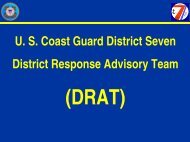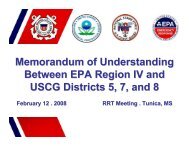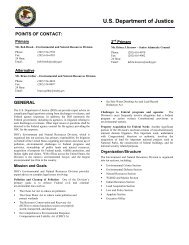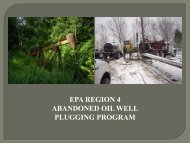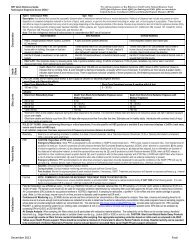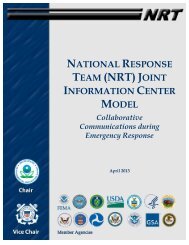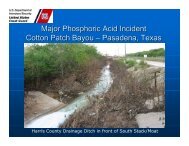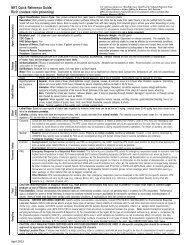USE OF DISPERSANTS - U.S. National Response Team (NRT)
USE OF DISPERSANTS - U.S. National Response Team (NRT)
USE OF DISPERSANTS - U.S. National Response Team (NRT)
- No tags were found...
Create successful ePaper yourself
Turn your PDF publications into a flip-book with our unique Google optimized e-Paper software.
DISPERSANT OBSERVER JOB AIDReporting Observations:• The Observer does not make operational decisions, i.e. how much dispersant to apply, when orwhere to apply it, etc. These decisions are made at the Command level. The Observer willmake observations based on those decisions.• Different Observers at the same site may reach different conclusions about how much of theslick had been dispersed. This is why standard reporting criteria and adherence to a commonset of guidelines is important.Oil On The Water:• Oil surface slicks and plumes can appear different for many reasons including: oil or productcharacteristics, time of day (different sun angles), weather, sea state, rate at which oil disperses,etc.• Low contrast conditions (i.e. overcast, twilight, haze, etc.) make observations difficult.• For best viewing, the sun should be behind you and with the aircraft at an altitude of about 200-300 feet flying at a 30 degree angle to the slick.Dispersant Applications:• During dispersants application, it may not be possible to determine the actual area of thickest oilconcentrations, resulting in variable oil to dispersant application rates. This could lead tovariations in the effectiveness of application. These conditions should be reported by theobserver.• Initial application may have a herding effect on the oil. This would make the slick appear to beshrinking, however, it is the dispersant “pushing” the oil together. Due to this effect, in somecases, the oil slick may even “visibly disappear” from the sea surface for a short time.• After dispersant application, there may be color changes on the emulsified slick due to reductionin water content and viscosity, and shape of slick, due to the demulsification action of thedispersant, which enhances dispersion.• Many trials have indicated that dispersants appear to modify the spreading rates of oils andwithin a few hours treated slicks cover much larger areas than control slicks.Effective/Ineffective Applications:• Dispersed oil plume formation may not be instantaneous after dispersant application. In somecases, such as when the oil is emulsified, it can take several hours. A dispersed oil plume maynot form at all.• The appearance of the dispersed plume can range from brown to white (cloudy) to no visibleplume.• Sometimes other things such as suspended solids may appear like dispersed oil.



